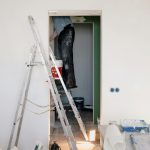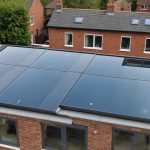Essential Pet-Friendly Home Modifications in the UK
Creating a pet-friendly home in UK homes requires thoughtful modifications that enhance both safety and comfort for pets. Core structural changes are pivotal, starting with improving pet accessibility. Installing pet doors suited for indoor and outdoor transitions respects the typical UK climate while allowing pets necessary freedom. For dogs, reinforcing entryways and thresholds can prevent drafts common in UK homes.
Living spaces must adapt to different animals—dogs benefit from durable flooring resistant to scratches, whereas cats require vertical climbing space like wall-mounted shelves or cat trees. Small animals, such as rabbits or guinea pigs, need secure enclosures with ventilation tailored to UK housing designs.
Also to see : What Are the Best Environments for Pets in the UK?
UK-specific factors, such as frequently damp weather and tighter space in terraced homes, dictate that humidity control and compact designs are essential for pet comfort. Waterproof mats and non-slip surfaces help mitigate hazards due to wet weather. Moreover, adjusting heating and insulation ensures pets stay warm without risking overheating, a common issue in traditionally insulated UK residences. These thoughtful home improvements blend practicality with pet well-being, making homes safer and more welcoming for furry residents.
Practical DIY Upgrades and Budget-Friendly Solutions
Creating a pet-friendly home in UK homes doesn’t always require costly renovations. Simple DIY pet home improvements can significantly boost pet comfort and safety without breaking the bank. For example, repurposing old furniture into cosy pet beds or adding removable non-slip mats to slippery floors offers affordable pet comfort while protecting surfaces from wear and tear.
In parallel : How Can You Create a Safe Outdoor Haven for Your Pet in the UK?
Many affordable products and materials are widely available in the UK, such as moisture-resistant paints and washable fabrics, ideal for managing the damp British climate. Installing corner guards, low-height gates, or DIY raised feeding stations offers effective, budget-friendly solutions to common pet needs.
Maintenance is key; using durable, easy-to-clean materials minimizes damage from claws or spills, which reduces long-term costs and stress. Additionally, regular checks and simple repairs keep these upgrades functional and safe. By focusing on practical, affordable DIY projects, pet owners can enhance their home environment while respecting both their finances and the specific demands of UK homes.
Enhancing Pet Safety and Cleanliness
Ensuring pet safety in UK homes requires pet-proofing critical areas thoroughly. Start by securing loose cables and using childproof latches on cabinets containing hazardous substances. Floors benefit from non-slip rugs to prevent slips, especially on smooth tile or wood common in UK housing. Regular inspection of entry points, like pet doors, deters escape or accidental injuries.
UK tenants must consider UK pet regulations, which often restrict modifications or impose safety standards. Before major home improvement involving pets, checking landlord or council rules is essential to avoid breaches.
Keeping a clean home with pets demands effective odour control and hygiene practices. Using enzymatic cleaners breaks down pet stains and odours more efficiently than regular products, preventing lingering smells. Regular vacuuming reduces pet hair and allergens, while washable covers on furniture protect both pets and surfaces.
Combining these strategies results in a safer, healthier environment for pets and owners alike. Prioritising pet safety and cleanliness alongside compliance with local guidelines ensures peace of mind while enhancing everyday comfort at home.
Transforming Gardens and Outdoor Spaces for Pets
Creating pet-friendly gardens in UK outdoor pet spaces requires careful planning to balance pet comfort with safety. Installing secure fencing suited to common UK garden layouts prevents escapes while allowing pets freedom to explore. For example, mesh panels and close-set wooden slats resist typical weather wear and deter digging or climbing.
Choosing plants wisely is crucial; many UK gardens contain flora toxic to pets. Avoiding species such as foxglove, rhododendron, and yew reduces poisoning risks. Instead, incorporating hardy, non-toxic plants like lavender and rosemary enriches the space without harm.
Weatherproof shelters shield pets from frequent UK rain and cold, improving pet comfort during outdoor time. Providing varied terrain, such as grassy patches alongside mulched areas, keeps pets stimulated physically and mentally.
Preventing hazards like pesticides or sharp garden tools keeps the area safe. Owners can use pet-safe pest control products to protect both plants and animals.
These modifications combine to make gardens safe, engaging spaces that suit UK homes’ specific outdoor conditions, meeting pets’ natural needs while safeguarding their wellbeing.
Essential Pet-Friendly Home Modifications in the UK
Making a pet-friendly home in UK homes starts with core structural changes aimed at improving pet comfort and safety. Installing pet doors tailored to typical UK weather promotes easy access while preventing drafts that often accompany traditional doorways. Reinforcing thresholds and entry points helps secure pets, especially dogs, against cold and damp conditions common in UK homes.
Adapting living spaces to different animals is key. Dogs need durable, scratch-resistant flooring to withstand wear, while cats benefit from climbing solutions like wall-mounted shelves, supporting their natural agility indoors. Small pets such as rabbits or guinea pigs require enclosures designed for proper ventilation and security, which aligns well with UK housing layouts.
UK-specific factors such as frequent dampness and spatial limitations influence modification choices. Waterproof mats help maintain dryness and safety in rainy seasons, while compact furniture can maximise space without sacrificing pet comfort. Heating solutions must balance warmth with preventing overheating, crucial in well-insulated UK homes. Through these tailored modifications, UK homeowners can create practical, welcoming environments that enhance pet welfare and complement local home designs.










